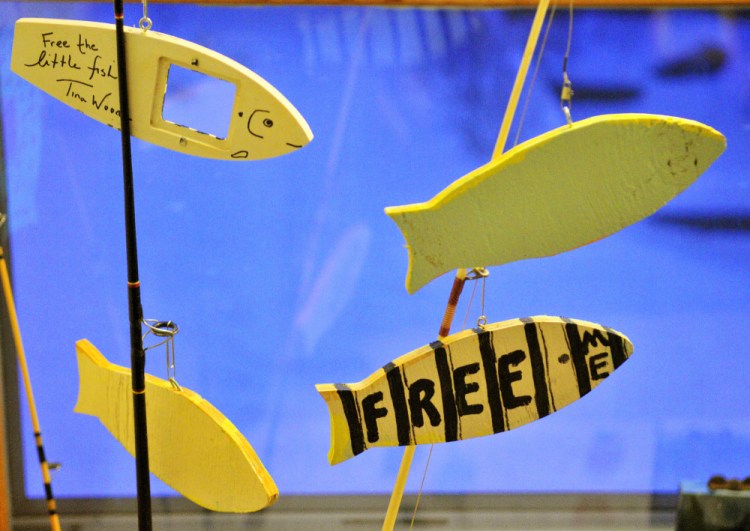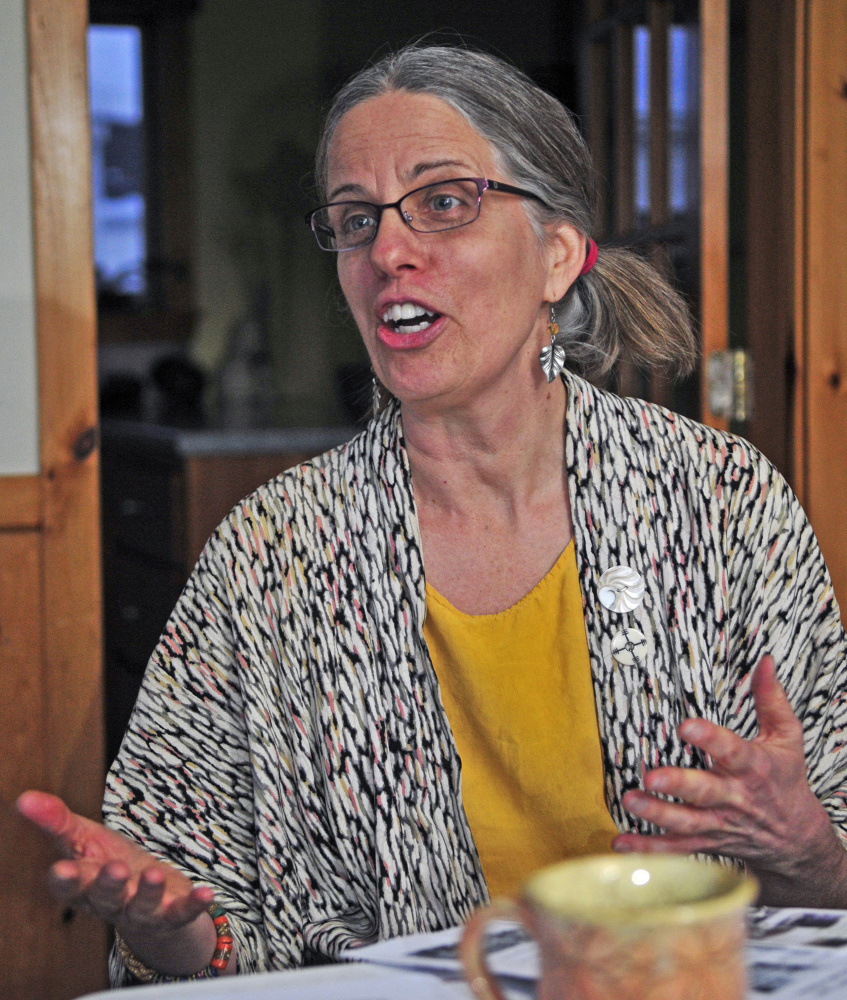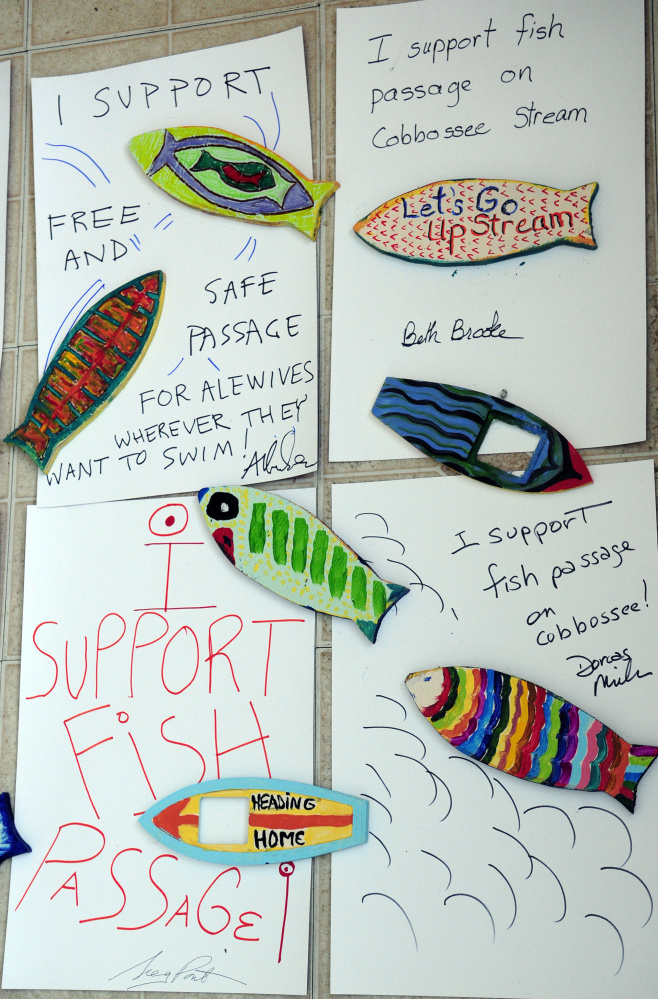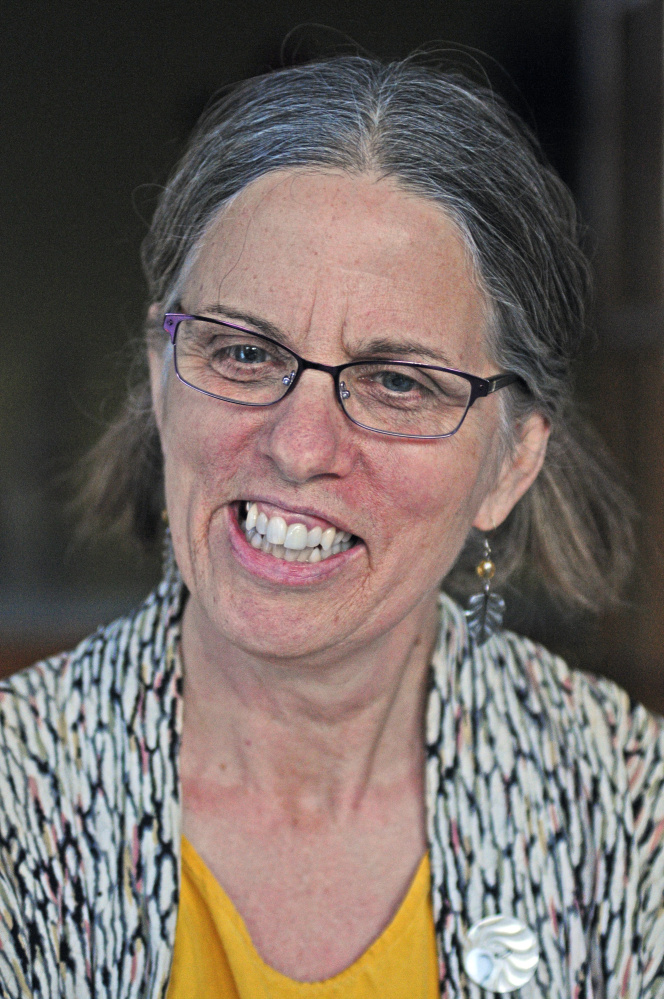GARDINER — When Tina Wood works to restore fish passage on Cobbosseecontee Stream, she’s walking a well-trodden path.
In 1795, her great-great-great-grandfather Enoch Wood, a Winthrop selectman, petitioned Gardiner selectmen to open the stream to allow the passage of fish through the waterway.
The fish — alewives, herring and salmon, among others — were a source of both protein and fertilizer for the people who lived upstream. The passage of fish was supposed to be guaranteed by the statutes of the Commonwealth of Massachusetts, which governed Maine at that time, but the statutes were largely ignored in the face of the needs of industry.
Tina Wood approached the Gardiner City Council earlier this month with her own request; it’s one the elected officials could grant.
In May, she and the volunteers of Upstream, the nonprofit group she works with, plan to install “informational artwork” in and around Water Street in downtown Gardiner to call attention to the species of diadromous, or sea-run, fish that for centuries had used the Cobbosseecontee Stream to travel inland until it was dammed in the late 1700s.
The installations, which will be in place through September, consist of wooden, painted fish that will be hung from fishing rods set into concrete planters. Wood has painted about 30 of them so far, but volunteers will have a chance to paint even more at upcoming creative workshops on Jan. 21 and Feb. 16 at the Gardiner Public Library, titled “Finding Home: A Migration Story,” and on Feb. 2 at the Granite Hill Estates retirement community in Hallowell and Augusta.
The installation will debut on May 6, the day of the Gardiner Artwalk, which will be preceded by an Alewife Afternoon that will include nature walks along the stream.
“I couldn’t be more proud of her,” said Nate Gray, a scientist with the Maine Department of Marine Resources. The voices of citizens, he said, are stronger than those of government agencies, even those charged with the responsibility of managing the habitat that supports species such as alewives, blueback herring, striped bass, American eels and Atlantic salmon.
“Having been in the business of restoration, I know that unless you get buy-in from the public, it can’t be done,” Gray said.
Wood said she wasn’t even aware of the passage of fish in Cobbosseecontee Stream until she and her children ventured down to the stream that runs behind their house in Gardiner. They heard the cacophony of birds that were feeding on the fish, whose progress up the stream was blocked by the first of three dams.
“My daughter said, ‘This is another awful thing in the world that no one’s going to fix,'” Wood said. “I knew if I let our neighbors and the town know, they would want to fix it.”
That led to the formation of Upstream, a group of 10 members that meets monthly to work to restore fish passage.
“I’m hoping people will be excited and show support for the stream, and that state and federal officials will take notice that we’re making progress on the fish passage,” Wood said.
Jessica Lowell — 621-5632
Twitter: @JLowellKJ
Send questions/comments to the editors.






Success. Please wait for the page to reload. If the page does not reload within 5 seconds, please refresh the page.
Enter your email and password to access comments.
Hi, to comment on stories you must . This profile is in addition to your subscription and website login.
Already have a commenting profile? .
Invalid username/password.
Please check your email to confirm and complete your registration.
Only subscribers are eligible to post comments. Please subscribe or login first for digital access. Here’s why.
Use the form below to reset your password. When you've submitted your account email, we will send an email with a reset code.